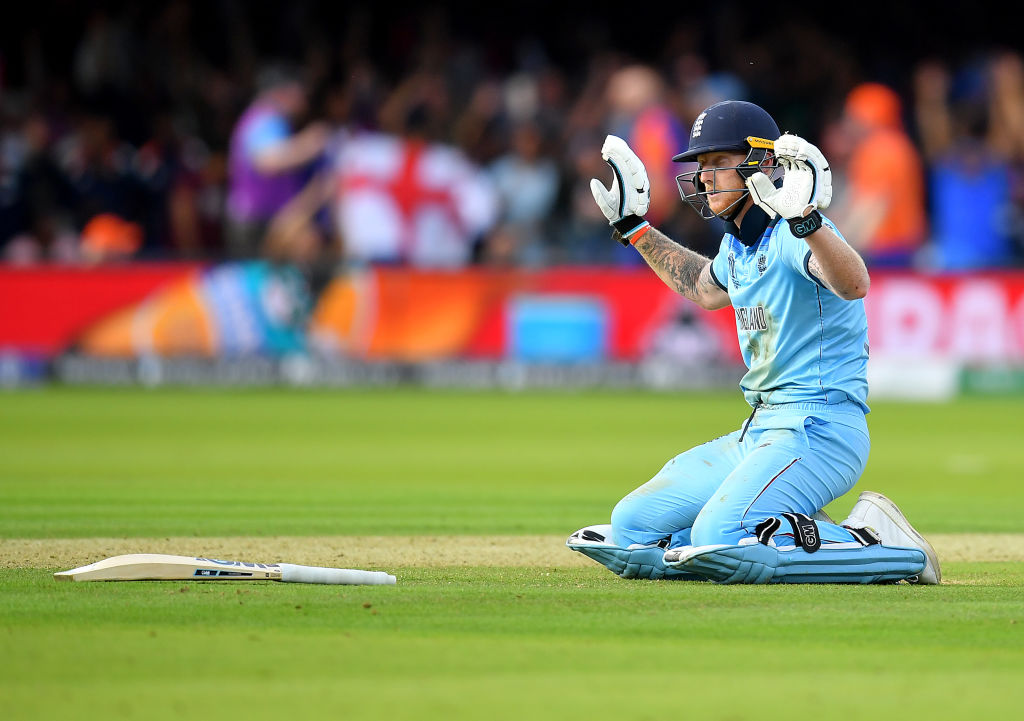One Day Internationals: Jack of all trades, master of none
One Day Internationals are getting more and more redundant as cricket evolves, slowly losing favour amongst the players, fans and organizers as highlighted by Ben Stokes' retirement. It is high time for the ICC to have serious discussions about the format’s future to save ODIs from extinction.

When Australia visited England for the annual Ashes series in 1970-71, the encounters proved to be less than remarkable. Taking on a rather cautious approach, both the teams played out two dull draws before heading to Southampton for the third encounter. With fan interest fast dwindling in anticipation of another boring clash, the heavens opened to further spoil matters. However, little did anyone know the circumstance would revolutionize cricket forever.
After the first two days’ play was washed out, a one-day match was scruffily scheduled on the fifth day. A last-minute sponsor was acquired in an attempt to recover the lost money and give the fans something to cheer about. Soon, the stadium was filled up with more than 46,000 people, more than twice the expected number, as even the one-sided clash made revolutionary throes throughout the global cricket community.
The game was later labelled as the first ever ODI, and gave way to a win-win format for everyone involved; the guaranteed results and energetic gameplay meant more fan interest, while the shorter playtime meant the potential for more matches and hence greater income opportunities for the cricketing board.
Even then, there were the inevitable traditionalists who distanced themselves from the format, criticizing its unusual format as opposed to the classic multi-day Test matches. But as is the nature of sports, cricket evolved and has continued to evolve in the 50 years since. Today, we stand at a point in time where ODIs have simply failed to keep up with the ever-growing changes, unable to adapt to the demands of the modern cricket fan. It is high time to seriously rethink the structure of ODIs and their relevance in the modern game and with the Future Tours Programme set to be announced soon by the ICC, this might be the perfect moment to retrospect on the same.
Firstly, money has driven cricket right since its very professionalization. Cricket boards have scurried after whatever earns them more. As is evident by the growing number of T20 tournaments, the shorter format clearly carries top billing in this aspect. All of the 9 top Test playing nations have annual domestic T20 tournaments, with all nations except New Zealand following a franchise-based structure involving international players. The domestic one-day tournaments have lost relevance to a large extent, their viewership numbers significantly dull compared to the shorter format counterparts.
Even on the international stage, cricketing boards have figured out the T20 format is able to recoup more money than the one-day games despite the shorter playtime. Since the start of 2019, there has been just one 5-match ODI series, played between Pakistan and England in May 2019, while only one more is scheduled between Australia and Sri Lanka ahead of the 2023 ICC World Cup. In the same time frame, 11 five-match T20 series have been played between the Test playing nations alone, and three more are scheduled till January 2023. Not to forget two T20 World Cups within 12 months along with an upcoming T20 Asia Cup.
In the era of COVID, the scrapping of ODIs in tight schedules has emerged as another norm amongst the top cricketing nations. For instance, recently the Proteas declared they would forfeit a whole three-match ODI series against Australia, even though the games form a part of the Super League. The decision has the hamper to strongly impact South Africa’s chances of direct qualification to the ICC World Cup 2023 in India, but who cares? It’s just ODIs anyway.
Secondly, on the cricketing front, ODIs have had little to offer off late, emerging as a batsman-dominated format through and through. The ICC has tried to tweak little rules to counter the same, but it has only borne negative consequences. For example, new balls from each end were supposed to aid the fast bowlers, but have only resulted in the extinction of reverse swing in the death overs. Even the supposedly difficult pitches settle down eventually for the batsmen, as bowlers are only allowed sparing moments of glory. In the third ODI between India and England, the new ball worked wonders but as the pitch wore on, a flurry of boundaries ultimately decided the match in the batsman’s favour.
Parimatch
Explore Parimatch review and find out what the best India cricket betting bookmaker is capable of!
Find OutIt took a good 34 years for a team to finally break the 400-run milestone that Australia achieved in 2005. However, since 2014-15 alone, the mark has been breached 10 times already. The average strike rate of all batsmen across ODIs in the last year stood higher than 90, a serious marker of the bowler’s pity.
The middle overs in ODIs often turn out to be some of the most painstaking cricket to watch. The ball doesn’t do much while the batsmen focus on simply rotating the strike, saving up wickets for the precious slog overs. There are hardly any interesting duels, and it all just seems like a dull prologue to the last 10 overs, where the match essentially takes on a T20 spirit.
Most importantly, ODIs have lost favour among the players themselves who no longer see its merit in the cricketing scenario. Ravichandran Ashwin, a cricket encyclopaedia who pretty much watches all the cricket a human can consume as per the legends, recently labelled the format as ‘irrelevant’ and an extended form of T20s. Cricket’s favourite superstar Ben Stokes chose to sacrifice ODIs when it came to shedding a little workload, keeping T20Is and Tests secure for the future.
It’s a question of relevance and I think ODI cricket needs to find its relevance. It needs to find its spot. The greatest beauty of one day cricket is – sorry was – the ebbs and flows of the game. People used to bide their time and take the game deep. The one-day format used to be a format where bowlers had a say. Even me as a cricket badger and a cricket nut, I switch off the TV after a point and that’s frankly very scary for the format of the game. When those ebbs and flows go missing, it’s not cricket anymore. It is just an extended form of T20.
Ravichandran Ashwin
The World Cups continue to be played in the 50-over format and generate great viewership, thus remaining the ICC’s marquee event. Even so, a heavyweight final between England and New Zealand in 2015 failed to surpass the views that a group stage encounter between India and Pakistan produced.
View this post on Instagram
All in all, ODIs carry characteristics of every aspect of cricket, yet the lack of uniqueness fails to make them stand out and excite the modern cricket fan. With all that being said, however, there is still a case to be made to retain ODIs so long as they are revamped.
In 2009, Sachin Tendulkar proposed an interesting format where the ODI games would be broken down into four innings of 25 overs each, much like a Test match. This would preserve the challenges of ODI cricket, while also offering a plethora of new strategic and tactical choices to help breathe fresh air into the format. Similarly, Ashwin suggested getting rid of the second new ball, thus making spin and reverse swing more prevalent again in the scheme of things. Whether such changes would be enough to keep the format alive is a question for time to answer, but an immediate restructuring is crucial and should be one of ICC’s priorities.

Comments
Sign up or log in to your account to leave comments and reactions
0 Comments